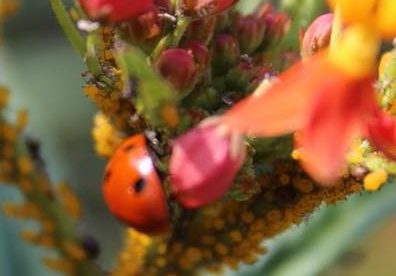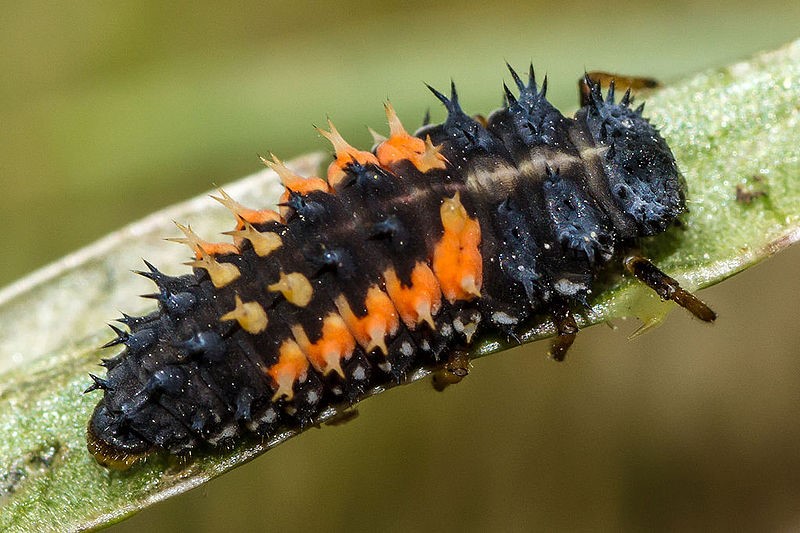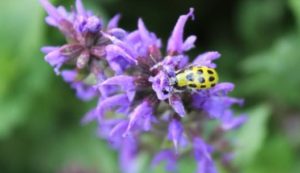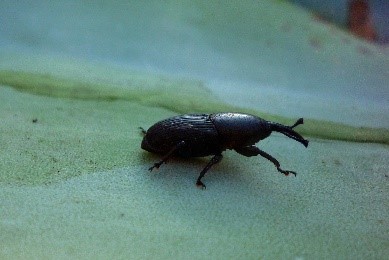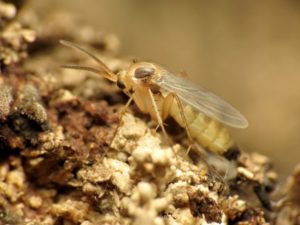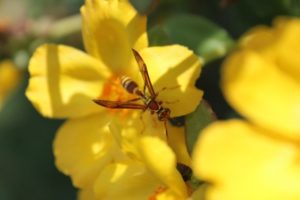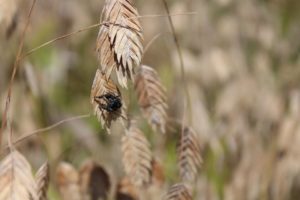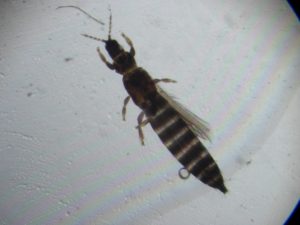Insects in the Garden – Friends and Foes
If you have ever ventured outside, you have probably come across some type of insect, especially if you have a garden of your own. Insects are a vital part of a healthy garden, and gardening would be difficult without them, whether they’re helping pollinate, eating harmful insects, or helping to decompose organic matter. But how do you tell which insects to keep and which to get rid of? Most gardeners will learn over time which insects are beneficial and which are harmful. Until you become your own self-taught pro, here are some basics to help you keep your garden happy.
The best place to start in any garden is with Integrated Pest Management(IPM). IPM involves finding the best control with the least environmental impact, leading to long-term management of pests in the garden, limited harmful pesticides in the garden, and proactive pest control over time.
IPM has five levels:
- Plants: Choose plants that work well in your area, keeping track of whether or not they are resistant to likely pests and diseases.
- Biological: Use one organism to control another, i.e. beneficial Insects.
- Cultural Control: Make your garden favorable for the plants you have and unfavorable for pests.
- Mechanical control: Use fences, traps and covers to keep pests out.
- Chemical Control: Whether it be organic or synthetic, chemicals are a last resort!
So how do you manage pests without pesticides? Make sure to keep your garden clean. Remove any dead plant material and weeds that are growing within your beds. Check for pests and damage. Once you identify who is in your garden, work to keep the beneficials and remove the pests. This requires that you learn to identify your insects. The list of beneficial insects can include any of a number of species that perform valued services like pollination, recycling organic matter and pest control. Harmful insects tend to be those that are detrimental to humans or human concerns including crops, livestock and forestry.
What follows is a list of insects, organized by their Orders, that we have seen at the Dallas Arboretum. This is in no way ALL the insects that are out at the garden, just a few that we have come across on multiple occasions.
Coleoptera
Beetles
Eyed Elaters are large click beetles. They have two large spots on their thorax, which look like deep set eyes. This is a defense mechanism against larger predators. Seeing an eyed elater in the garden means that their larvae is in the garden as well. These larvae dine on many wood-boring beetle larvae.

Ladybugs are a fantastic, beneficial insect that you will see all over the garden. Not only do the adults eat aphids and other small insects, but the larvae will devour even more than the adults. Few people know what ladybug larvae look like. They are usually spiky, orange and black.
Cucumber beetles are another beetle that is seen all over the garden, but they are not beneficial. They are bright yellow-green, and they attack cucurbits, especially the seedlings.
Agave Weevils attack…you guessed it, agaves. The larvae get into the roots of the agave and turn it into mush. You will start to see your rigid agaves wilt and turn brown. Once they finish with one, they move on to another. If you start to see agave weevil damage, remove those plants and make sure to check the soil for any larvae, which you should remove as well.
Diptera
Flies
Robberflies are very interesting insects. They are generalist feeders and will eat pretty much everything (including bees). They sit and wait for an insect to fly by and snatch it out of the air.
Mimic flies don’t help with pest control, but they are beneficial in the sense of pollinating. There are many around the garden, and they often look like bees or wasps.
Fungus Gnats are usually seen hanging around the soil of indoor plants. The larvae eat plant roots and the adults are just generally annoying.
Mosquitoes are easiest to control when they are in their larval form. The larvae are aquatic and can be easily controlled either with fish, other aquatic larvae or an organic pesticide. If you have any standing water in your garden, you need to dump it out or treat it for mosquito larvae. The adults are usually eaten by other insects, birds, bats and other insect predators.
Hemiptera
True Bugs
Assassin Bugs are another generalist feeder that you may see all over the garden. They eat aphids, beetle larvae and other soft bodied insects. There are many different types of assassin bugs, and most of them are beneficial.
Pirate Bugs eat aphids, spider mites and thrips. They are relatively small brown insects that you can find on the undersides of leaves.
Leaffooted Bugs can cause fruit to abort and lead to discoloration on crops. They are usually a dark brown and their back legs have larger brown “leaf” like structures.
Milkweed Bug is commonly found on milkweed plants. Although they look like assassin bugs, they do not eat other insects. Instead, they eat the milkweed plant and pods.
Squash Bugs attack plants like vegetables and succulents.
Aphids are the worst and come in many colors.
Mealybugs are a vector for many plant diseases. You usually see them with aphids or on the bark of trees.
Whitefles feed on the underside of plant leaves and tend to swarm at dusk.
Scale insects come in both soft bodied and hard bodied varieties. They feed off the plant and are make whatever they eat much less aesthetically pleasing. Even when dead, they stick to the plant so you have to physically remove them.
Hymenoptera
Bees, Wasps and Ants
Parasitic Wasps eat caterpillars, grub worms, and many other pests. There are multiple types of parasitic wasps, but we use Trichogramma wasps to treat webworms, and we have seen Ensign wasps help combat cockroach populations.
Predatory Wasps use a wide variety of caterpillars including earworms, armyworms, loopers, and hornworms as food for their larvae.
The Cicada Killer may look aggressive but they only hunts cicadas.
Honey Bees are not predator, but rather are fantastic pollinators. They eat pollen and nectar.
Ants, although not harmful insect in terms of eating plants, tend to create mounds or “Ant Hills” that can smother plant roots.
Wasps are aggressive and can sting.
Lepidoptera
Butterflies and Moths
Butterflies as adults are wonderful for the garden. Not only are they pretty, but they help to pollinate the garden.
Caterpillars destroy everything, whether it be a fritillary caterpillar (which will devour an entire passionvine) or webworms (which love to munch on pecans trees). You have to choose your battles when it comes to figuring out which caterpillars you want to keep and what you want to get rid of.
Mantodea
Praying Mantids
Praying Mantids are another generalist feeder but will usually go for larger insects like grasshoppers, flies and bees.
Neuroptera
Lacewings, Antlions, and Mantidflies
Lacewing larvae eat aphids, soft bodied insects, mites, insect eggs, thrips, mealybugs, immature whiteflies and small caterpillars. They basically eat all the small harmful insects you will encounter in the garden. They look a lot like ladybug larvae but they are a more muted brownish-green.
Odonata
Dragonflies and Damselflies
Dragonflies and Damselflies look very similar. Damselflies usually land with their wings closed and their eyes do not touch. Dragonflies are usually larger, land with their wings spread, and their eyes touch. The adults are generalist feeders, while the larvae are aquatic and usually dine on mosquito larvae.
Arachnids
Spiders and Mites
Spiders eat all types of insects. Spiders should be kept in the garden, because they help to maintain balance.
Spiders unfortunately can also be harmful if provoked. It’s best to keep an eye out for these varieties, and avoid them if you can.
Predatory mites are fantastic because they eat other harmful mites. Mites are hard to control because they are so small, so predatory mites really help out when it comes to control.
Spider Mites are very hard to control and can be a vector for viruses. They create a web over plants which is how they got the name spider mites.
Thysanoptera
Thrips
Thrips are another very tiny insect that is hard to control. They cause browning on flower buds and can also be a vector for viruses.
As a gardener, you should always keep an eye out for insects in your garden, and note them all whether they are harmful or beneficial. Keep the steps of Integrated Pest Management in mind, and remember that pesticides should be your last resort when it comes to control. They can kill beneficial insects just as much as pests. If you have to resort to pesticides, organic or synthetic, make sure to read the label carefully and apply the correct amount. If you apply it wrong, certain types of insects can build up a tolerance, and then they will be running your garden.
Please feel free to approach us on the horticulture team and ask us your questions if you see us in the garden. And if you have a specific question about insects, as for me, Megan Proska, and I’ll do my best to answer!
Related Posts
Comments are closed.



